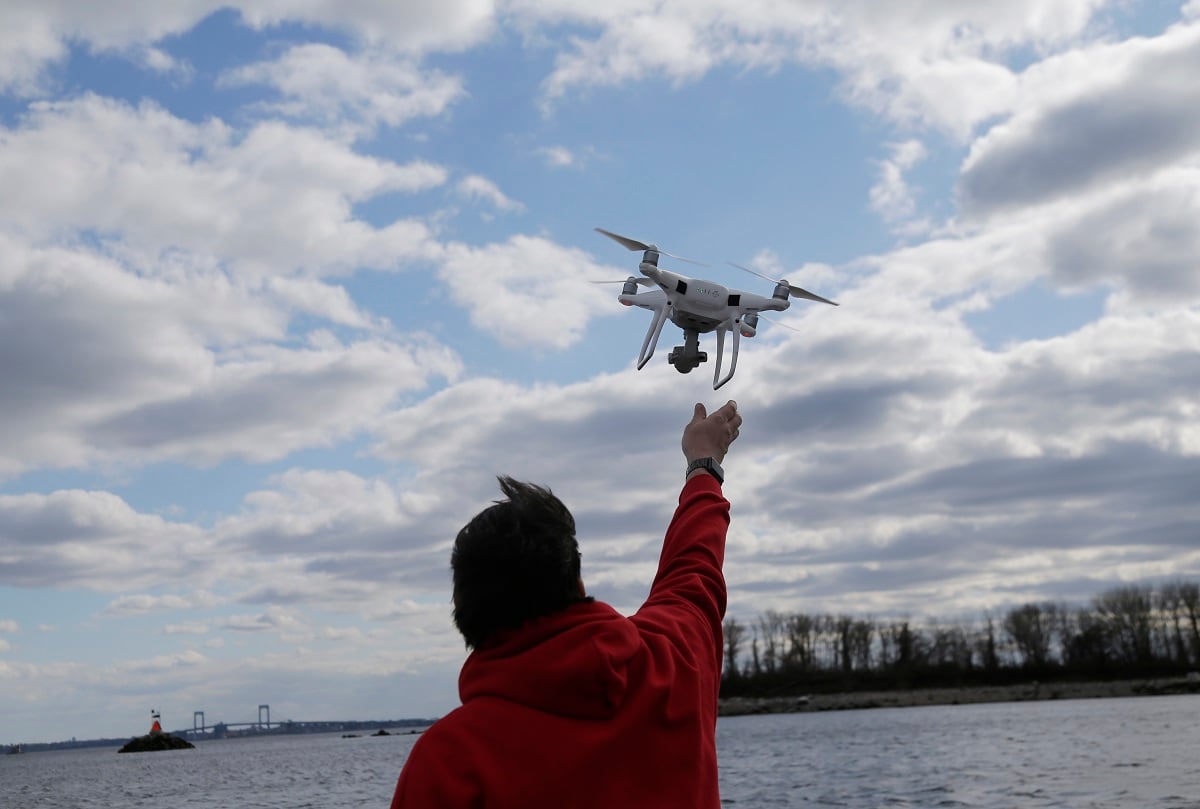WASHINGTON — Federal officials from the Departments of Justice and Homeland Security asked lawmakers for expanded authority to address the growing threat of domestic drones during a Senate hearing on Thursday.
Unmanned aircraft systems have become a regular feature of American life over the past decade. As the cost of production decreased, many industries, from food delivery to outdoor recreation, have sought to capitalize on the technology.
The rise of drones has also raised concerns about safety. Congress should give local and state law enforcement power to counter drone threats and expand the existing authority given to federal agencies, which is poised to expire this fall, the officials said.
“Like many advances in technology, drones also bring serious risks to the public when they’re misused,” said Brad Wiegmann, deputy assistant attorney general for DOJ’s National Security Division, told the Senate Homeland Security and Governmental Affairs Committee hearing.
The Federal Aviation Administration estimates that by 2024, about 2.3 million unmanned aircraft systems, including 1.5 million recreational drones and about 800,000 commercial systems, will be registered to fly in U.S. airspace.
Wiegmann said that DOJ has seen an increase in drone usage across a wide spectrum of criminal activities. The drones can be used to smuggle items into prisons, disrupt flights and have the potential to be armed with weapons. Drones equipped with makeshift explosives pose a particular threat to large gatherings of people, he said.
Under its current authority, the FBI conducted 70 counter drone operations at large public events ranging from the Super Bowl to the New Year’s Eve celebration in Times Square, Wiegmann said.
However, demand for counter-drone support outstrips the federal government’s limited resources, he said.
“We need to empower others to help us take on this responsibility,” Wiegmann said, pointing toward the potential capabilities of state and local officials.
Wiegmann said he supports a pilot program that would enable a number of state and local law enforcement entities each year to engage in drone detection and mitigation activities. The program would enable more gatherings, including large-scale sporting events, to be protected through counter-drone technology.
Acting DHS Assistant Secretary for Counterterrorism and Threat Prevention Samantha Vinograd said that the existing power provided to federal agencies contains gaps that need to be closed as Congress moves to reauthorize the authorities given to federal law enforcement officials.
For example, although the Transportation Security Administration is tasked with airport security, it lacks authority to proactively protect transportation infrastructure from drone threats, she said.
Can TSA mitigate cases of drones near airports?
The increase of domestic drones poses a specific hurdle for airports, which need to keep track of everything in nearby air space to avoid collisions with planes. In 2019, air traffic at Newark Liberty International Airport in New Jersey was temporarily halted after a drone sighting in nearby air space.
Vinograd asked lawmakers to expand TSA’s power to mitigate drones when they’re detected in nearby skies. The extension would not only protect human life but also minimize the economic impact on airports forced to shut down due to drone sightings, she said.
In April, the White House released a whole-of-government plan to address domestic drone threats. The plan seeks to expand where the government can protect against drone activity, who is authorized to take action and how it can be accomplished lawfully.
As part of the plan, the Biden administration called on Congress to close many of the gaps highlighted by Vinograd and Wiegmann during the Thursday hearing.
Democratic Sen. Gary Peters of Michigan, chair of the committee, said he plans to introduce bipartisan legislation in the coming weeks to reauthorize and strengthen counter-drone authorities.
Catherine Buchaniec is a reporter at C4ISRNET, where she covers artificial intelligence, cyber warfare and uncrewed technologies.





